18 Ways To Upgrade Your Recipes With Bacon Grease

When you hear the phrase "liquid gold" in reference to kitchen items, you may think of a couple of things, like a good extra virgin olive oil or a pat of the finest butter that money can buy. But we're thinking of something a little bit different: bacon grease.
Bacon grease is, in short, the stuff left in the pan after cooking bacon. While many people soak up the fat with a paper towel and toss it in the trash, they shouldn't -- there is so much that this miracle fat can do. It has a smoke point that's slightly above butter, at around 325 F, which means that it has a bit more utility for high-temperature cooking. Plus, the flavor is salty, smoky, and -- of course -- bacon-y.
After you've strained out the meaty flecks, you can store bacon fat in your freezer for up to an entire year. When you're ready to cook, pop out a cube and put it to work. At a loss for how to use it? Not to worry -- we've curated this list of our favorite recipes to upgrade with bacon grease.
Read more: The 20 Best Olive Oils For Cooking
Add It To Dinner Rolls For A Perfect Crust

The free plate of dinner rolls will always singlehandedly be the best part about eating at a fast casual restaurant. But most chains haven't caught on to our upgrade: You can slather bacon grease on your store-bought dinner rolls to add meaty flavor and give each roll a perfect complexion.
There are many reasons why you should grab bacon grease for your dinner rolls instead of the standard butter or egg wash. The high fat content of the grease ensures your rolls turn the perfect color in the oven, while the meaty flavor gives everyone at your dinner table something to talk about. You don't have to stick to using this hack for the rolls you serve alongside your Christmas ham or Thanksgiving spread either; bacon grease makes a delectable pairing for slider rolls and subdues some of the sweetness of Hawaiian rolls.
Give Your Buttermilk Biscuits A Beautiful Shine
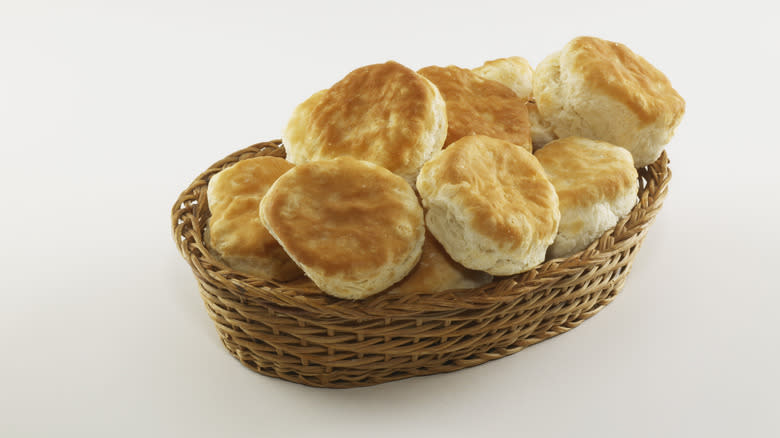
The only thing better than a dinner roll is a buttermilk biscuit. While nothing beats a homemade batch smothered in a decadent gravy or used as a base for a breakfast sandwich, there's absolutely nothing wrong with buying a package of store-bought biscuits to use as a quick side to your main meal.
If you want to save these biscuits from being dry and flavorless, brush them with bacon grease for an unbelievably savory upgrade. Start by filtering your grease before you slather it on top. Filtering is an important step because it pulls some of the flakes of bacon still lingering in the grease out, preventing your biscuits' flavor from leaning too far into the porky realm. The flavor post-filter is still smoky and rich, but you can plausibly pair these biscuits with a schmear of sweet raspberry jam and butter.
Add Umami Notes To Your Ramen Noodles
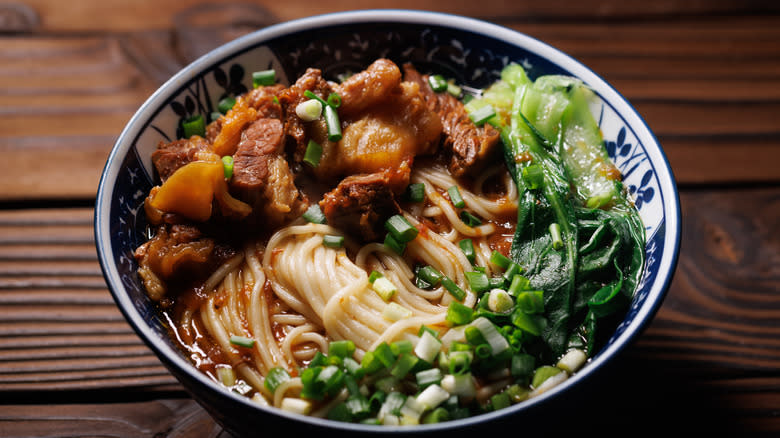
Ramen is a notably flavorful dish. Not only is the broth, often made of a meat or fish stock, a star component, the bowl is also filled with aromatics, meats, and occasionally unconventional ingredients like cheese to give it a distinct profile. But one ingredient that you probably didn't see coming is bacon grease.
Stirring in bacon grease will give you an even more flavor-packed bowl of ramen. In this case, the bacon grease is just used as an oil, so it can be applied to both homemade ramen and the instant variety. You can either add a spoonful to the bowl after adding the starchy noodles or add it directly to the broth as it's boiling. The latter method will give you ramen akin to tonkatsu, which is somewhat creamy and has strong, fatty notes. While pork broth might be a go-to for you, considering where bacon comes from, this hack can also be utilized for chicken, beef, or seafood broth bowls.
Use It As A Base For Southern Gravy
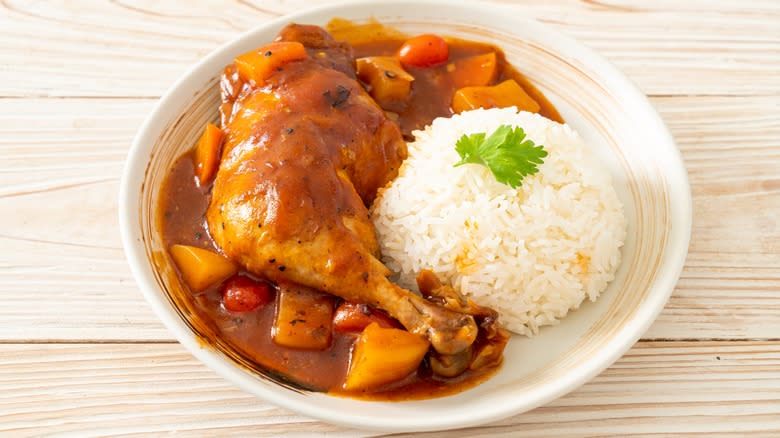
More types of gravy are out there than you'd expect, including a rainbow-spanning array of colors. Southern gravy is a tomato-based gravy that doesn't require the addition of any milk, but that doesn't mean it slacks on flavor. You can amp it up even further by combining tomato and bacon grease. This results in a ridiculously easy -- and ridiculously flavorful -- batch of gravy for your next meatloaf, mashed potatoes, or rice.
This recipe is also a great way to make use of older tomatoes. They should be cooked down until soft, then mixed with the bacon grease and a roux. You want full-fat pork bacon for this recipe, and preferably a kind that doesn't have any smoked profile to it. Although this recipe is relatively bare-bones, you can customize it with a sprinkle of Old Bay seasoning, a handful of hot dried chilis, or a splash of cream to round off the acidity of the tomatoes.
Give Your Fried Rice A Meaty Edge

If you want to try making classic Chinese restaurant food at home, fried rice is a good place to start. You can chuck almost anything into your wok, along with leftover rice, to make a meaty side or main dish, but bacon grease is among the best options.
Bacon grease plays very well with leftover fried rice, but it can also be used to make a fresh batch. Drop a couple of tablespoons of the solidified grease into a hot wok and mix it around to distribute. Then, add your chicken, shrimp, rice, and whatever else. To both prevent your rice from burning and distribute the umami flavors everywhere, toss your rice and ingredients in the grease. Each bite will be filled with a bacon-y undertone that will make it even better than your local takeout joint.
Fry Your Breakfast Potatoes In Leftover Grease
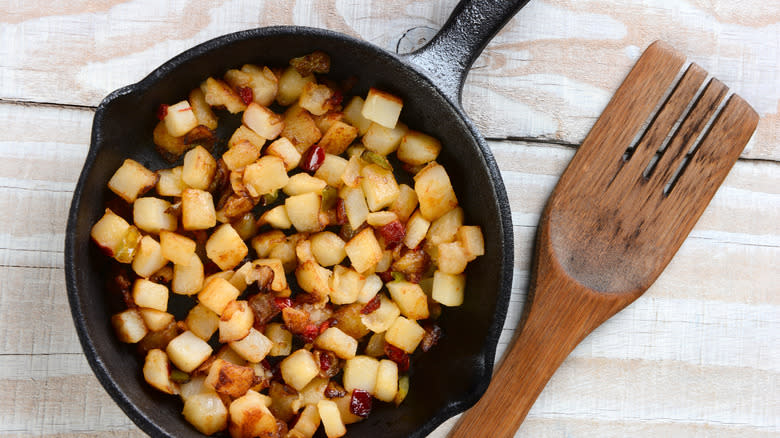
A good breakfast has protein and starch, and there is no better starch than potatoes. These taters, which are often cooked in a skillet until golden brown, really need oil or fat to kickstart their perfectly crisp exteriors. One of the best ways to accomplish this is by frying your breakfast potatoes in bacon grease.
If you're cooking bacon for your breakfast spread, you already have the grease handy. Once you par-cook your potatoes (or defrost your frozen spuds), simply finish them off in the grease. There's no need to strain out the bacon pieces; rather, these little flecks imbue your potatoes with a ton of flavor. The fat in the oil also gives your potatoes the perfect ratio of crunchy exterior to soft, starchy interior. You can use bacon grease to finish off your onions, peppers, and other hash ingredients as well.
Add Savory Notes To Your Salad Dressing

Most salad is jam-packed with crunchy veggies, bright colors, and fresh flavors. But what it often misses is a quality fatty ingredient to tie it all together. Salad dressing is a great vector for bright, acidic notes that bring unity to your salad components -- but this isn't the only opportunity for flavor. You can also level up your salad dressing with umami-packed bacon grease.
Worried about grease overwhelming the other flavors? This is easily remedied by playing with the ratio of the dressing's other ingredients. The base of your dressing should be made with equal parts strained bacon grease and vinegar. If you want more oil but not extra bacon-y notes, use a neutral oil like extra virgin olive oil or avocado oil. Bacon grease also plays well with additions like crunchy croutons and fried halloumi.
Swap It For Butter In Your Grilled Cheese
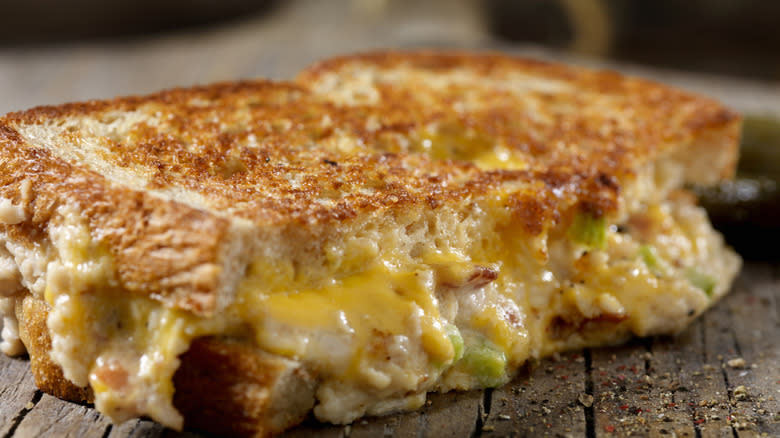
Grilled cheese is a blank canvas for creativity and playing with different flavors. While there's nothing wrong with a slab of American cheese and two slices of cheap grocery store bread, you can also dress up your sandwich with a blend of cheese, savory meats, and more. If you want a deliciously crisp crust on the outside of your bread and to imbue some savory, salty undertones, grab your container of leftover grease from the fridge.
Bacon grease is the secret ingredient to elevating grilled cheese; it's so good, it will have you asking why you didn't try it before. Spread a layer of grease on the outside of your bread, as you would if you were using butter or margarine. You can also add bacon to your grilled cheese by inserting a couple of leftover slices or schmearing the inside with a layer of homemade bacon jam.
Use Bacon Grease In Skillet Cornbread
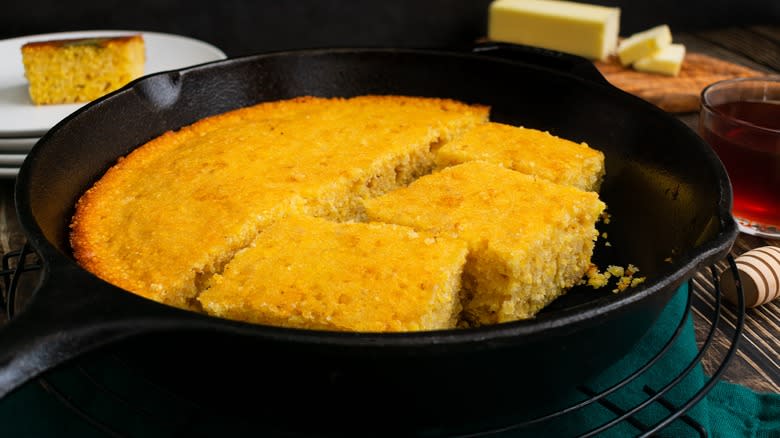
When we think of Southern sides, collard greens, black-eyed peas, and, of course, cornbread come to mind. The latter is a perfect vector for using up your leftover bacon grease, and it can easily shift the balance of the side to something a bit more savory. Moreover, this ingredient is preferable to lard because it has a more defined porky flavor.
To elevate your skillet cornbread with bacon fat, mince the bacon into tiny pieces to give the grease an opportunity to render into the pan. Then, use these cracklings as an ingredient in your batter while leaving the grease in the pan. The grease prevents the batter from sticking to the cast iron as it cooks, and will also complement the acidity of the buttermilk and the robustness of the cornmeal. You can also stick to just using the bacon grease and play with sweet additions to your cornbread, like a pat of butter on top and a drizzle of honey.
Crisp Up Your Soft Tortillas

Are you a hard-shell or soft-shell taco person? With this hack, you can get the best of both worlds. Heating your soft tortillas with the leftover grease in your cast iron skillet allows otherwise bland tortillas to soak in a ton of flavor and make for a delicious bite. Bacon grease, specifically, is a great ingredient to use, but you can also swap it out with the cooking oil from sautéing veggies for a vegetarian version.
Place each of your tortillas in the greased skillet for about 20 to 30 seconds, flipping if you want to get the flavor to stick on both sides. The smokiness of the bacon works very well with Southwestern and Mexican spice profiles, like cumin, adobo, cayenne, and ancho chili powder. Plus, you don't have to stick to just using this method for tacos. You can also utilize it to make your fajita nights a little more exciting or add bacon-y flair to your salad wraps.
Add Complex Flavor Notes To Pulled Pork
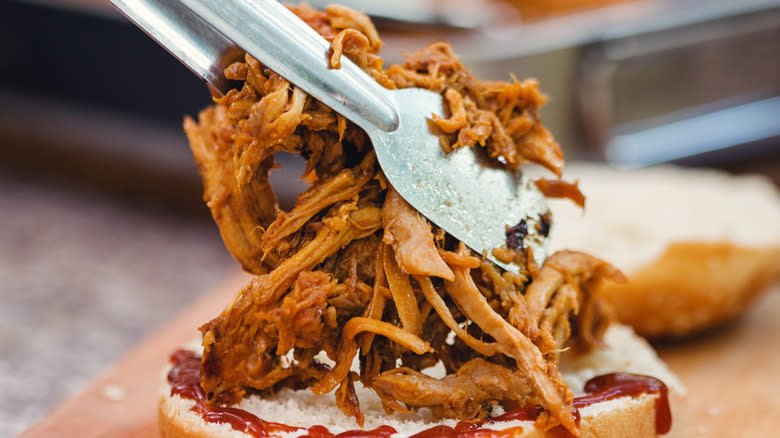
Pulled pork is a summer staple and one of many sandwiches we just can't get enough of. We especially love when these sandwiches are piled high with coleslaw and the sweet, tangy notes of a good barbecue sauce. But your pulled pork may be missing the mark if you're not adding bacon grease.
Bacon fat is the secret ingredient for incredibly flavorful pulled pork. There is perfect synergy between the salty notes of bacon and the succulent nature of pulled pork. To fuse the two together, add your bacon grease to the pork after it has been partially cooked and shredded. As the grease comes to temperature, it will permeate the meat and infuse it with flavor.
You don't just have to use the pulled pork for the sandwiches at your barbecue either. Upgrade your carnitas tacos by swapping some of the lard the pork is simmered in for bacon grease.
Pop It In The Pan With Caramelized Onions
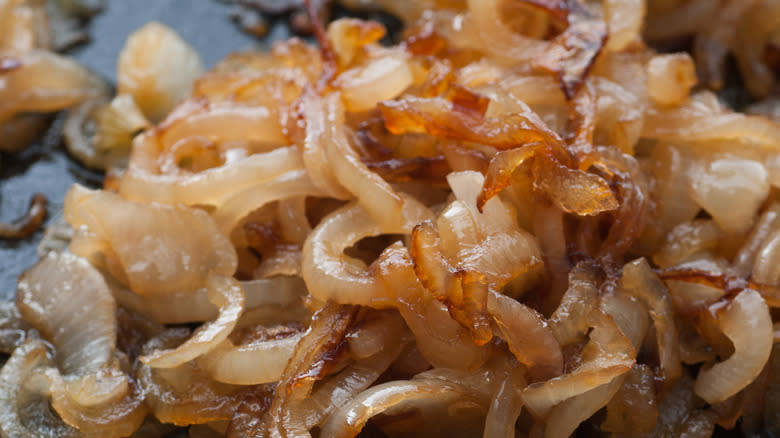
There's nothing more heavenly than tasting caramelized onions fresh from the pan. These onions lose all of their sharp flavor qualities when they're cooked in fat and become soft, take on a brown color, and harbor sweet notes.
Bacon fat transforms caramelized onions further by contrasting these sweet flavors with smoky notes and creating a more complex dish. Simply swap bacon grease for the butter or oil you start your onions in. As the alliums cook, they absorb the porky flavor of the meat. Proper caramelization can take a long time, since the process is accomplished over low heat, but the onions you get from it are well worth it.
Grease Your Waffle Iron With Bacon-Y Goodness
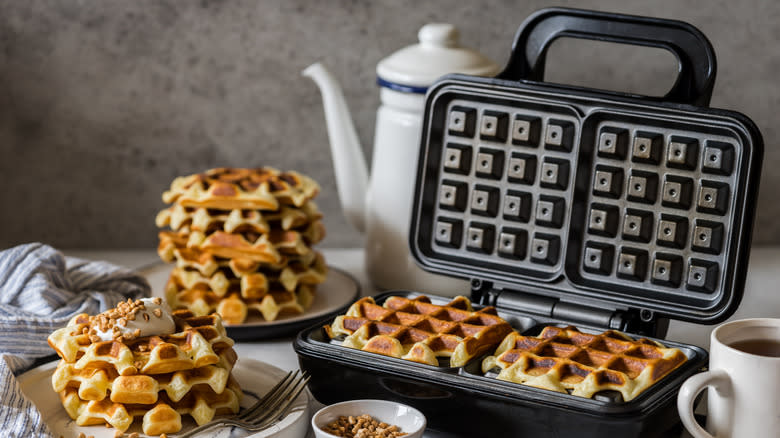
We love it when breakfast foods star in supporting roles for other breakfast foods. Such is the case with bacon grease, which you can use to coat your waffle iron. The mild, salty undertone of the bacon grease helps curb the overwhelming sweetness of the waffle and plays well with both fruits and a drizzle of maple syrup on top of the finished stack. Another beneficial thing about using bacon grease is that it prevents your waffle from sticking to the iron and becoming a menace to clean up.
For the best results, coat your iron with liquid grease between each waffle. This hack also works well for making super crispy hash brown waffles.
Flavor Canned Refried Beans
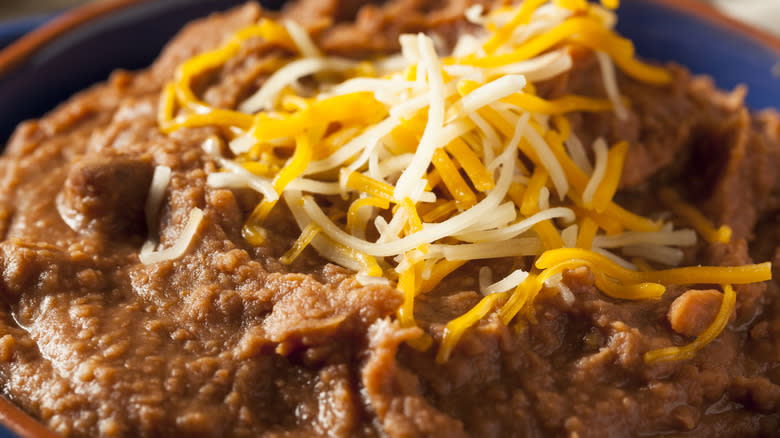
A can of refried beans sitting in the pantry is easily overlooked. But this shouldn't be the case. These legumes aren't like other types of canned beans, because they come cooked and mashed and often contain pork lard. There are plenty of possibilities that can come from such a canvas -- especially if you use bacon grease.
To give your refried beans a flavor boost, add some bacon fat to the mix. The can already has some mild smoky and salty notes, but the bacon elevates what's there to a new level. You only need to stir in between 1 and 2 tablespoons of bacon grease per can to help bulk up the savory flavors. You can also sauté the onions and garlic in a pan with the bacon fat to help bulk up your beans.
Scramble Your Eggs In Bacon Grease
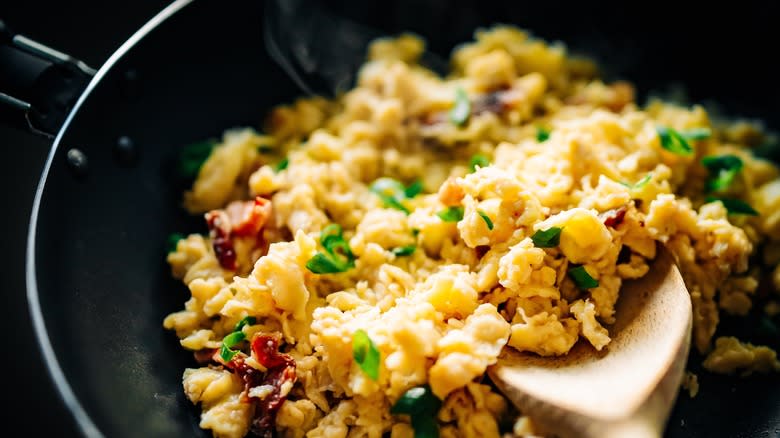
This one is a classic hack and especially useful for folks who don't like utilizing two pans to make a single breakfast in the morning. Scrambling eggs in leftover bacon fat is a great way to prevent the whites from sticking to the pan while also adding more flavor to the dish. Cook the bacon first and leave the grease in the pan so that your eggs can absorb its flavor. That's it -- it really is that simple.
Scrambled eggs aren't the only egg dish that benefits from a bit of bacon grease: It's also the secret to fried eggs. Coat the pan in the grease before carefully adding the egg so that the whites can soak up all that meaty flavor.
Use Bacon Fat In Your Favorite Baked Goods
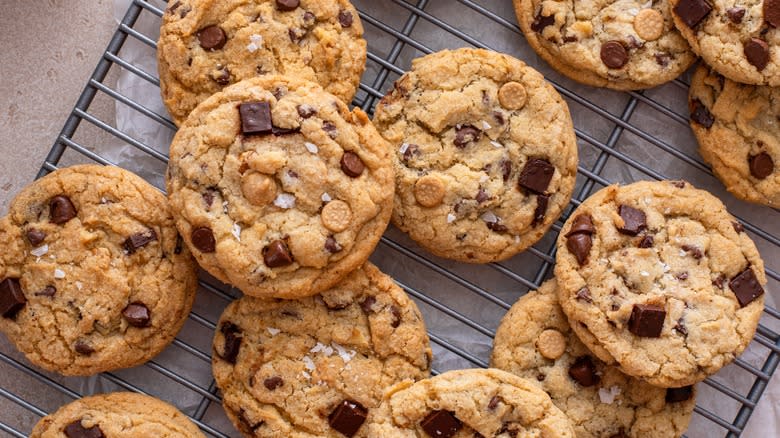
If you consider yourself an avid baker, you likely have a can of shortening in your pantry. But if you don't, you might have the next best shortening substitute for all things baked: bacon grease. You can swap bacon grease for shortening in the crust for, say, a maple bourbon bacon pecan pie by pulsing it with the butter, flour, salt, and cold water. The porkiness of the bacon grease gives the crust a buttery texture and makes for a pie no one will ever forget.
There's just one thing to remember: When you're working with this ingredient in your baked goods, be wary that adding bacon grease may skew the saltiness. It's also a 1-to-1 shortening substitute, but this doesn't carry over to butter, because the latter has a higher water content. This means that bacon grease isn't a good fit for flaky biscuits, which need butter's steam to rise.
Coat The Outside Of Your Potato Skins With It
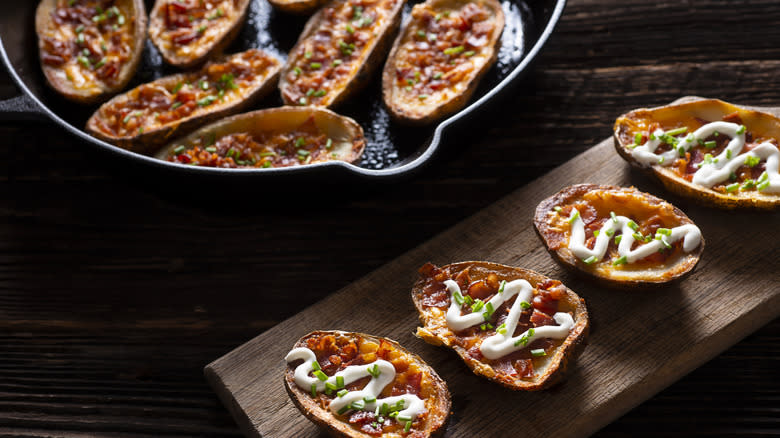
Ready, set, hike! Potato skins are a popular treat for tailgates and house parties alike, and after trying one of these skins rubbed in bacon grease, you'll see why.
Baking perfect potato skins is all about achieving crispy, crusty shells, thanks to a hefty coat of oil. But, a neutral olive or avocado oil doesn't do much for the flavor of your skins. Rubbing the potatoes with bacon grease, however, adds a meaty undertone to your potatoes and complements rich fillings like cheese and sour cream. You can also balance some of the bacon flavors out by starting with a coat of olive oil and then adding the bacon grease when you broil your skins with their fillings already nestled inside.
Toss Your Popcorn In It
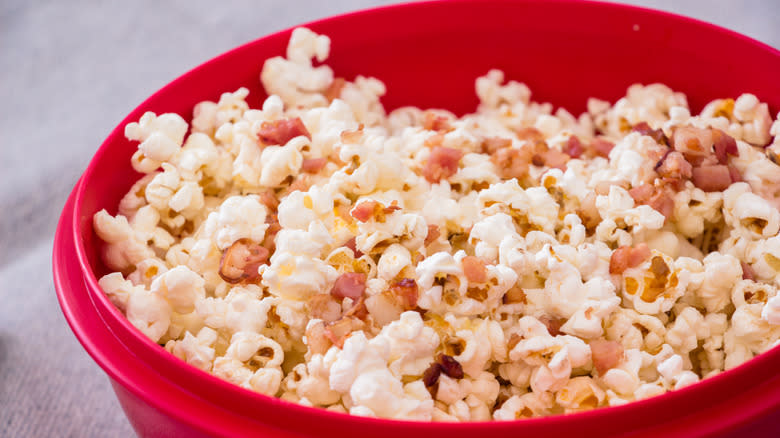
No movie night is complete without a bowl of popcorn and the cheesiest rom-com you can find. But instead of settling for lackluster kernels, amp up the flavor with the help of bacon grease. It's the secret ingredient for delicious stovetop popcorn that will leave you craving another bowl.
Coat your pan with 2 to 3 tablespoons of bacon grease for each 1/3 cup of kernels. To ensure that your kernels have enough room, use a big stock pot for this recipe. Pop a few kernels to start, and once you hear the clamor of noise coming from your stove, add the rest of them.
Read the original article on Tasting Table.
Solve the daily Crossword

